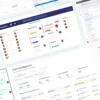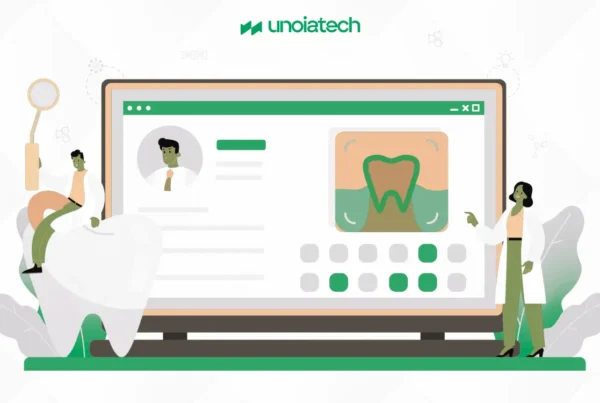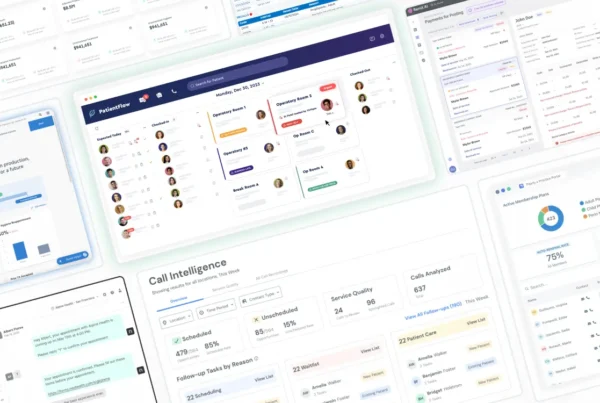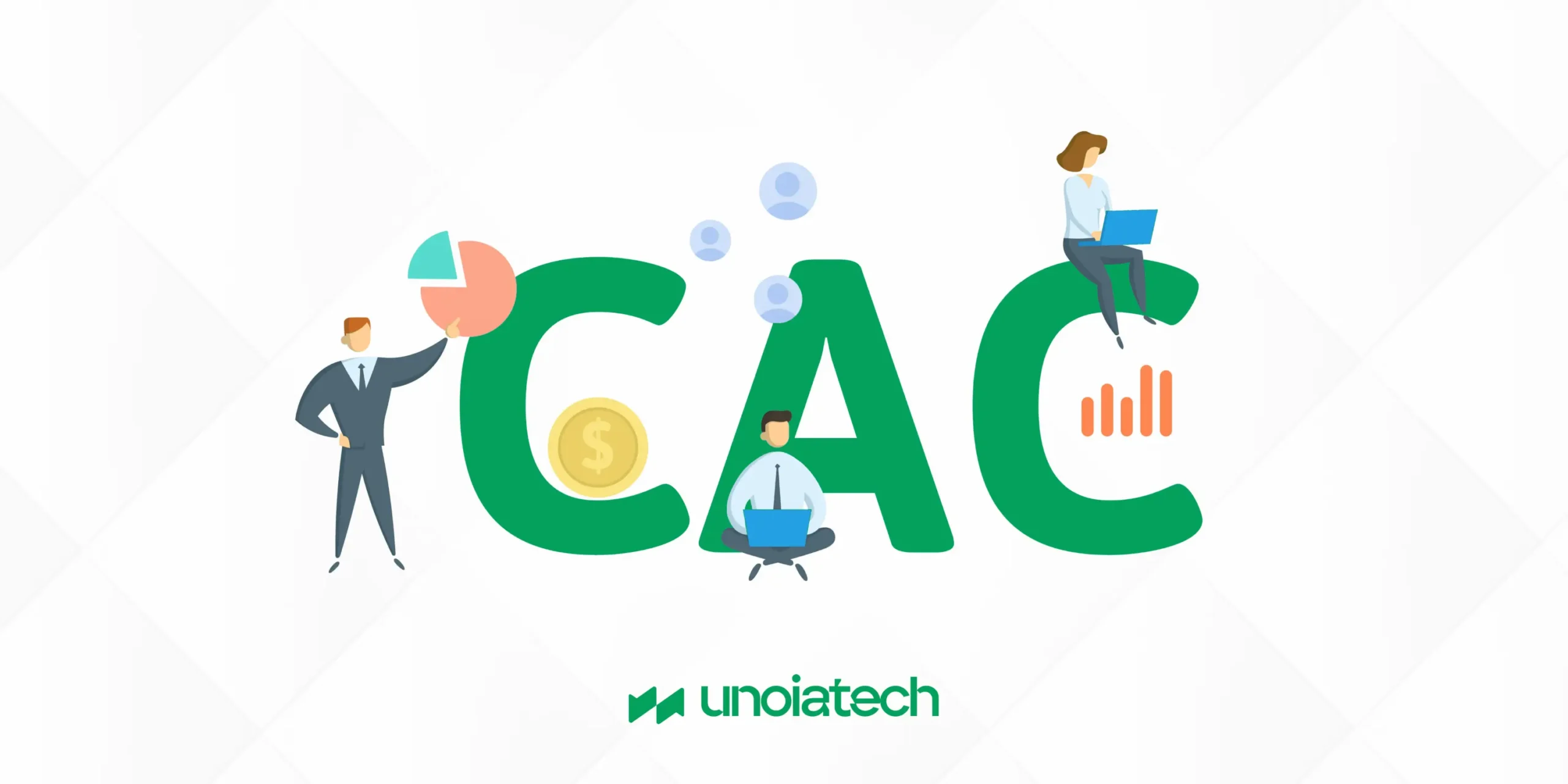
Starting a successful SaaS business is an exciting challenge that requires a keen eye for planning, an innovative marketing approach, and a knack for salesmanship to attract new customers and create a loyal following.
But how do you determine if your marketing, sales operations, and other efforts are working? And even more importantly, whether or not they’re profitable? That’s where customer acquisition cost (CAC) comes into play.
Whether you’re a startup or a well-established SaaS business, keeping an eye on your CAC will help you make more informed decisions about distributing resources and growing your company.
In this article, we’ll guide you through calculating your CAC like a pro, why it’s a vital metric, and how to optimize it for long-term success.
What Is Customer Acquisition Cost?
As a SaaS business owner, understanding your customer acquisition cost is critical to your company’s success. CAC is the total expense of obtaining a new customer. This includes all sales and marketing expenses, such as advertising, salaries, commissions, and other direct expenditures associated with attracting new SaaS customers.
Why Is CAC Important for SaaS?
CAC is a critical metric for SaaS companies because it helps determine how much a company can afford to spend on cultivating new customers and still make a profit.
If you have high CAC, it means that you’re spending more on acquiring new customers than they’re worth; if you have low CAC, it means that each customer is bringing in enough revenue to cover the total cost of acquiring them.
Moreover, CAC is also important for SaaS companies because it helps determine a company’s break-even point: the revenue that must be generated in order to cover both fixed costs and variable expenses. By understanding their CAC, SaaS companies can determine how many customers they need to acquire to break even and make a profit.
How to Calculate CAC?
CAC calculation is a relatively straightforward process. However, it is vital to note that different businesses may have different ways of calculating CAC, depending on the specific SaaS metrics they use. Here is a general formula for calculating CAC:
Customer Acquisition Cost (CAC) Formula
CAC = (Total Marketing and Sales Expenses) / (Number of New Customers Acquired)
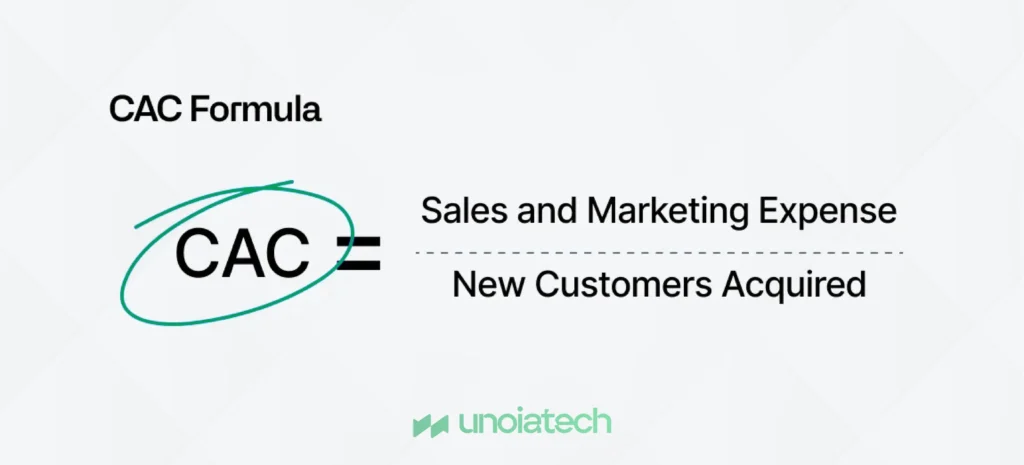
To calculate CAC, you need to determine the total amount you spent on marketing and sales expenses over a specific time period, such as a month or a quarter. This includes any direct costs associated with attracting new customers, such as advertising expenses, salaries, and commissions for salespeople.
Next, you need to determine how many new customers you received during that same period. This can be done by tracking the number of new clients who signed up for your service or product during that time.
Finally, divide the total sales and marketing costs by the total number of new customers acquired to get your CAC.
Customer Acquisition Cost Examples
Let’s look at a couple of clear examples to better understand how to calculate CAC.
Example 1:
Total Marketing and Sales Expenses = $10,000
Number of New Customers Acquired = 100
CAC = ($10,000) / (100) = $100
In this example, the CAC is $100 per new customer.
Example 2:
Total Marketing and Sales Expenses = $15,000
Number of New Customers Acquired = 50
CAC = ($15,000) / (50) = $300
In this example, the CAC is $300 per new customer.
What Should Be Included in Customer Acquisition Cost?
When calculating CAC, it is essential to include all marketing and sales expenses associated with acquiring new customers. This includes:
- Advertising
- Trade shows and conferences
- Direct mail campaigns
- Marketing automation tools
- Social media marketing
- Content creation and distribution
- Sales team salaries, benefits, and commissions
- Travel expenses
Remember: acquiring a new customer (and getting them to convert into paying customers) takes time and effort. When calculating CAC, make sure you factor in the amount of time it takes to journey through each part of the conversion funnel—from generating leads to closing sales.
Other Things to Consider When Calculating CAC
In addition to the above CAC formula—which gives you a quick snapshot of the amount of money you spend on acquiring new customers—you should also consider other factors that might give you a more detailed picture of your marketing situation. These additional metrics will help provide insight into which areas are working well and where opportunities may still exist.
Using a proven SaaS Metrics Template can help you track all of these important metrics in one place.
Average Revenue Per User (ARPU)
ARPU is the average amount of revenue you generate per user. To calculate ARPU, divide your total revenue by the number of users. Knowing your ARPU is essential because it helps determine if your content marketing strategy and sales process generate enough earnings to cover your CAC.
Monthly Recurring Revenue (MRR)
Similarly, MRR is the total amount of recurring revenue you generate each month. It’s calculated by multiplying your monthly recurring price (MRP) by the number of customers who have signed up for that plan.
Annual Recurring Revenue (ARR)
ARR is the annual revenue you generate from customers on an ongoing subscription. Understanding your ARR is important because it helps determine if you can continue growing your business by acquiring new customers or improving retention rates and increasing ARPU.
Customer Lifetime Value (CLTV)
CLTV is the amount of revenue you can anticipate generating from a customer over their lifetime. To calculate LTV, multiply your ARPU by the average lifespan of a customer (in months or years). Knowing your LTV is crucial when helping you determine if your CAC is worth the investment.
Amortizing Costs
While some acquisition costs are easy to allocate, others can be challenging to associate with a specific time period. Cost amortization is the process of spreading out the price of a purchase over time. For example, say your sales team attends a networking summit in January, and you expect to win customers from the leads generated there over the year; it’s better to spread this cost out over twelve months—rather than allocating disproportionate costs just for January.
CAC Payback
The CAC Payback is the time it takes for your customers to repay the cost of acquiring them. It’s calculated by dividing your total customer acquisition cost (CAC) by your monthly recurring revenue (MRR). The lower this number, the better.
What Is a Good CAC For SaaS?
In the SaaS industry, an ideal CAC will depend on various factors, including your target market, the complexity of your product, and your revenue goals. However, a helpful rule of thumb is that your CAC should be less than your LTV.
This means that you’re generating more revenue from a customer than it costs you to acquire them. Generally, an acquisition cost that’s less than 25% of your LTV (a CAC ratio of 3:1) is considered good for SaaS businesses.
Put another way, the value of a customer should be about three times more than what it costs to acquire them (e.g., if you spend $100 on ads to get one new customer who spends $300 with you, that’s great).
How to Improve CAC
To improve CAC, it’s mission-critical to focus on optimizing your marketing and sales strategies to attract and convert customers more efficiently. Here are some helpful tips on reducing your CAC:
- Target the right audience: Make sure you target your marketing efforts to the right audience who will most likely use and benefit from your SaaS platform.
- Improve your website and landing pages: Ensure your website and landing pages are optimized for high conversion rates and provide a clear value proposition to potential customers.
- Use customer referrals: Encourage your current customers to refer new customers to your SaaS platform to reduce acquisition costs.
- Optimize your pricing model: Consider adjusting your pricing strategy to increase revenue per customer and improve profitability.
- Optimize your marketing channels: Determine which are most effective for your business and focus your efforts on those channels. This will help you reduce spending on ineffective channels and increase your ROI.
- Improve your onboarding process: A smooth and efficient onboarding process can increase customer retention and reduce churn. Ensure your onboarding process is easy to understand and provides value to your customers.
- Create a customer success plan: A customer success plan outlines your strategy for reducing churn and increasing CLV. Early in the sales cycle, equip your teams with the tools and training to provide exceptional value—not just answer questions.
Keep in mind: CAC solely encompasses the expenses associated with acquiring new customers. The cost of servicing existing customers should not be factored in.
Maximizing the Power of CAC in Your SaaS Business
In summary, mastering the art of calculating (and optimizing) CAC is a game-changer for the prosperity of your B2C or B2B SaaS business—enabling you to make savvy choices about your marketing and sales tactics while evaluating the efficacy of your customer acquisition strategies.
To truly harness the power of CAC, stay on top of your data, set realistic targets, and continuously enhance your CAC by streamlining your sales funnel, curbing customer churn rates, and boosting retention.
Moreover, coupling CAC with other key metrics like LTV and ROI can offer a comprehensive overview of your company’s financial well-being, empowering you to allocate resources wisely.
Ultimately, prioritizing and using CAC effectively will pave the path to sustainable growth and prosperity for your SaaS business. Get ready to skyrocket your success!



